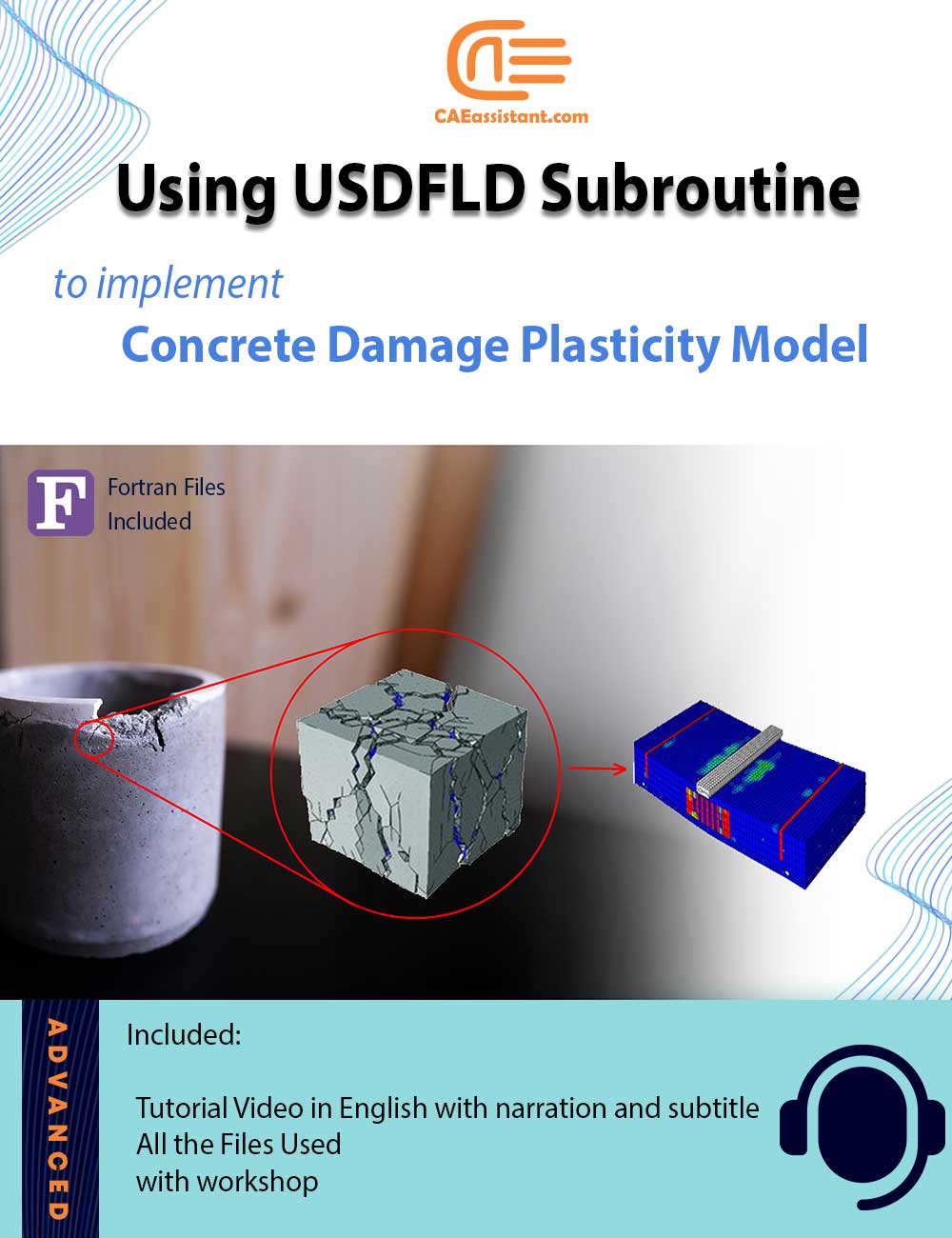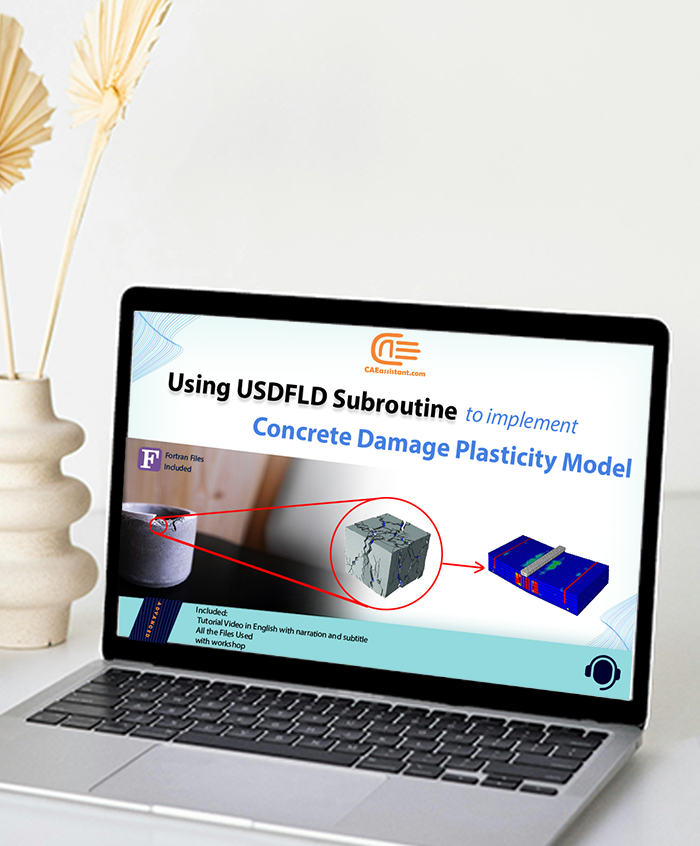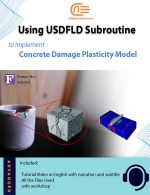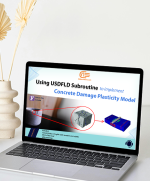This tutorial package offers a comprehensive guide for simulating concrete structures using the Concrete Damaged Plasticity Model (CDPM) in Abaqus. This package equips users with the knowledge and tools necessary to perform accurate finite element method (FEM) simulations. The tutorial covers every step required to model the complex behavior of concrete structural elements including material definitions, boundary conditions, meshing, and the use of the USDFLD subroutine to dynamically adjust material properties during the simulation.
The package is designed for engineers, researchers, and practitioners interested in understanding how the CDP model can be extended and modified to simulate concrete structural elements when the material properties of concrete varies during loading application. The key focus is on the practical application of advanced FEM techniques in Abaqus, particularly for civil engineering structures subjected to multi-axial stress states.
Introduction to the Concrete Damage Plasticity Model
The CDP model in Abaqus is widely used for simulating the non-linear behavior of concrete under tensile and compressive stress. In typical reinforced concrete structures, the CDP model accounts for damage, plasticity, strain hardening and softening, making it ideal for modeling complex behaviors like cracking and crushing. In some structural applications such as structures subjected to multi-axial stress states, modifications to the standard CDP model are required. In this tutorial, you will learn how to implement these modifications in Abaqus.
Simulation Setup and Material Properties
To begin, the tutorial outlines how to set up the simulation in Abaqus by defining the material properties, along with the necessary geometry. The elastic modulus, Poisson’s ratio, and compressive strength of the concrete are defined based on either experimental data or standards such as ACI 318. The plastic behavior of concrete is modeled using the modified Concrete Damaged Plasticity Model with modifications introduced by means of the USDFLD subroutine.
Implementing the USDFLD Subroutine for Dynamic Material Properties
One of the key features of this simulation package is the use of the USDFLD subroutine in Abaqus. This custom subroutine allows for dynamic adjustment of material properties during the analysis based on evolving field variables, such as the pressure and the strain. The USDFLD subroutine enables the simulation to modify the properties such as the hardening/softening rules, damage parameter and dilation angle to changes in the stress state or in the strain that is needed in many structural applications.
The tutorial provides a step-by-step guide on how to write, implement, and validate the USDFLD subroutine, ensuring that users can easily integrate this feature into their Abaqus simulations.
Boundary Conditions, Element Types, and Meshing
A critical aspect of finite element modeling is the correct application of boundary conditions and the selection of appropriate elements. In this tutorial, we apply boundary conditions that replicate the behavior of the structural, such as pinned or fixed supports, and the application of load through displacement control.
- Element types: The concrete core is modeled using 8-node brick elements with reduced integration (C3D8R).
- Meshing: Meshing plays a crucial role in the accuracy of finite element simulations. In this tutorial, you will learn how to refine the mesh for modelled elements to avoid stress concentrations and discontinuities. The tutorial also covers how to conduct a mesh convergence study, ensuring that the model provides reliable results without excessive computational cost.
Running the Simulation and Analyzing Results
Once the model setup is complete, the tutorial guides users through running the simulation in Abaqus. During the simulation, key results are monitored. Post-processing is an essential step in verifying and interpreting the results of your simulation. The package demonstrates how to generate contour plots of stress, strain, and damage, as well as how to export data for further analysis.
Conclusion
This tutorial package provides a detailed guide to simulating concrete structures using the Concrete Damaged Plasticity Model in Abaqus. With a focus on implementing the USDFLD subroutine for dynamic material property adjustments, the package allows users to model the complex behavior of concrete. The insights provided in this tutorial make it a valuable resource for engineers and researchers aiming to extend the capabilities of FEM in simulating advanced civil engineering structures.
By following this tutorial, you will gain practical experience in setting up, running, and analyzing high-precision FEM simulations in Abaqus.





Reviews
Clear filtersThere are no reviews yet.